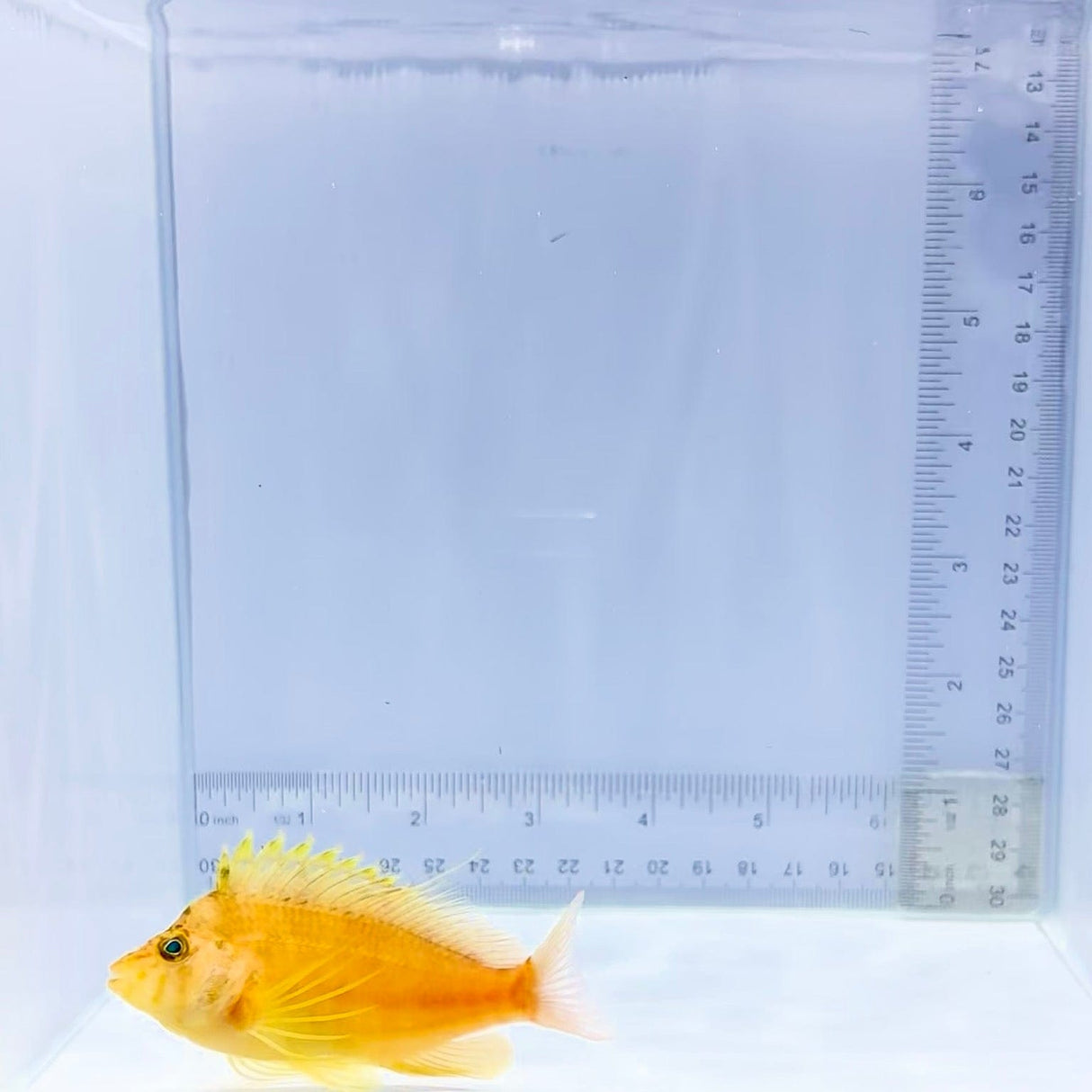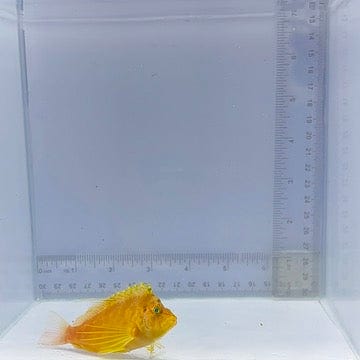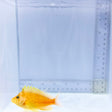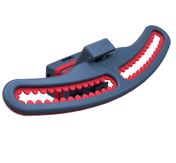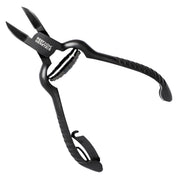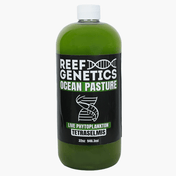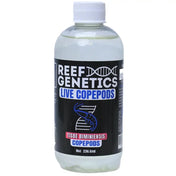Introduction to Saltwater Hawkfish
Hawkfish are bold, curious, and carnivorous saltwater fish known for their unique perching behavior. Lacking a swim bladder, they rest on corals and rock ledges, scanning their surroundings before darting to capture prey. Their hardy nature and distinct personalities make them a favorite among marine hobbyists. While they are reef-safe in terms of coral compatibility, hawkfish have a predatory nature and may consume small shrimp, crabs, and tiny fish, making them best suited for fish-only or carefully planned reef tanks.
Care Requirements
Care Level: Easy – Hardy and adaptable Minimum Tank Size: 40+ gallons Aquarium Setup: Requires plenty of live rock for perching Prefers moderate water flow with open hunting space Can be kept singly or in pairs if introduced together Hawkfish are territorial and will often claim a specific rock or coral formation as their perch. Diet & Feeding Hawkfish are opportunistic carnivores, feeding on small fish, shrimp, and other meaty foods in the wild. Diet Type: Carnivorous – Prefers live and frozen foods
Recommended Foods:
Mysis shrimp, brine shrimp, and finely chopped seafood High-quality frozen marine foods and pellets Live feeder shrimp for larger species A protein-rich diet supports their hunting instincts and maintains optimal health.
Lifespan & Growth Rate
Lifespan: 5-10 years Size Potential: Typically grows 3-5 inches, with some species reaching 6 inches Hawkfish remain relatively small but require ample rockwork and structured tank space to feel secure.
Temperament & Compatibility
Temperament: Semi-Aggressive – Territorial but manageable in most aquariums Reef Safe? With Caution – Does not harm corals but may eat small invertebrates Hawkfish generally coexist well with larger, non-aggressive fish, but their predatory instincts make them unsuitable for tanks with small shrimp, gobies, or other bite-sized tankmates.
Common Challenges & Considerations
May Prey on Small Invertebrates: Avoid keeping hawkfish with small shrimp or tiny fish. Territorial Nature: Best added as the last fish in a community tank to minimize aggression. Perching Behavior: While fascinating, their habit of sitting on coral polyps may stress some sensitive species. Ensuring a well-structured environment with sturdy perches helps hawkfish feel secure and display natural behaviors.
Color Varieties & Popular Species
Hawkfish display a range of vibrant colors and patterns, making them a bold addition to marine aquariums. Popular Hawkfish Species: Flame Hawkfish (Neocirrhites armatus) – Brilliant red body with black dorsal markings Longnose Hawkfish (Oxycirrhites typus) – White body with red lattice-like markings, known for its elongated snout Arc-Eye Hawkfish (Paracirrhites arcatus) – Reddish-brown body with a distinct orange eye marking Freckled Hawkfish (Paracirrhites forsteri) – White body with red mottling, adaptable to various tank sizes
At Top Shelf Aquatics, we take pride in ensuring your order arrives safely and in perfect condition. Here’s everything you need to know about our shipping process:
Livestock Shipping Details
- Flat Rate Shipping:
- $39.99 Out of State
- $34.99 Florida (In-State)
- Orders over $299 ship FREE!
- NO FREE Shipping during Sale Events
- Shipping Days: The calendar during checkout determines when your livestock order will arrive. Normally we ship Monday - Thursday via FedEx Priority Overnight.
Orders placed by 2 PM EST Monday - Thursday ship the same day. Orders placed after 2 PM or on Fridays will ship the next business day. - Delivery Times: Most packages arrive by 10:30 AM EST, though remote areas may experience later deliveries.
We take every measure to protect your livestock, including specialized packaging to maintain temperature and safety during transit.
Dead on Arrival (DOA) Policy
In the rare event of a DOA, you must submit a DOA Request within 2 hours of delivery (FedEx posted time). Once submitted, we will issue a replacement or store credit for the livestock. Please note:
- Shipping costs are not included in the credit.
- Refunds are not offered for livestock or shipping.
While we cannot be held responsible for delays caused by mechanical or weather issues, rest assured we’ll do everything possible to make it right!
Reef Guard Protection Plan
For ultimate peace of mind, upgrade to our Reef Guard Protection Plan. With Reef Guard, you’ll enjoy:
- Extended Livestock Guarantee: Coverage for up to 5 days.
- Priority Resolutions: Hassle-free claims with fast resolutions.
- Weather & Shipping Delay Coverage: Includes FedEx lost packages and damages.
Shipping Restrictions
- We currently ship livestock only within the continental U.S.
- Note: Due to Hawaii state law, we are unable to ship corals to Hawaii.
Now’s the perfect time to prepare your aquarium for its new additions. Consider doing a water change and ensuring space is ready. Check out our YouTube channel for detailed care instructions for your new corals!
For any questions or concerns, feel free to reach out to our support team. We’re here to help make your reefing journey a success!
5 Day Reef Guard
Temp-Control Box
Priority Overnight
Expert Care Support
